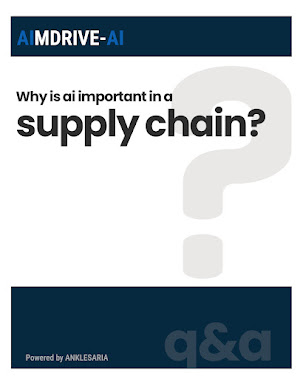Analyze a Supplier’s Profit
How to assess whether a supplier’s profit is fair and reasonable?
Solution: This can be determined with AIMDRIVE-AI Cost Analysis.
Visit https://aimdrive.com/ to perform AIMDRIVE-AI Price Analysis and AIMDRIVE-AI Cost Analysis
AIMDRIVE-AI Cost Analysis: Industry Average Cost Profile
The questions you need to answer are:
In this case the supplier’s profit is 3% above the Industry Average profit, i.e. you are about to pay a 3% profit premium above an industry average solution. This could be a good thing if you are looking to source from an above-average supplier. However, you should now ensure that you are getting tangible value for this 3% premium. You should ask the supplier: What exactly am I getting in terms of additional value, benefits, etc. that is above an industry-average solution? If this turns out to be difficult for the supplier to build their case, you may want to articulate for them, what you would like to get in return for paying a 3% premium.
Note: If the supplier is not willing to share such details, we must use a Should Cost model to estimate the amount of Profit likely included in the current price.
AIMDRIVE-AI Cost Analysis: Should Cost Model
Solution: This can be determined with AIMDRIVE-AI Cost Analysis.
Visit https://aimdrive.com/ to perform AIMDRIVE-AI Price Analysis and AIMDRIVE-AI Cost Analysis
AIMDRIVE-AI Cost Analysis: Industry Average Cost Profile
- Obtain the Industry Average Cost Profile of products sold by this industry to understand the proportion of the Products’ Sales Price that is attributable to each of the five cost elements
Industry Average Cost Profile % Direct Materials 60.0 Direct Labor 5.0 Manufacturing Overhead 15.0 Cost of Goods Sold (COGS) 80.0 GSA & Other Expenses 15.0 Profit Before Tax (PBT) 5.0 TOTAL 100.0
In this case the benchmark industry average profit before tax realized is 5.0%. - Ask the supplier for a breakdown of their price, according to the same five cost elements. If the supplier is not willing to share such details, ask what profit margin is embedded in their price.
- Let’s say the supplier has shared that the profit margin embedded in their price is 8%. This can be compared to the benchmark industry average profit of 5%. This is done to ascertain whether the supplier is accounting for a fair and reasonable profit compared to the industry.
The questions you need to answer are:
- Is the supplier’s profit in line with the industry average profit, is it above or below?
- What could be reasons for a difference?
In this case the supplier’s profit is 3% above the Industry Average profit, i.e. you are about to pay a 3% profit premium above an industry average solution. This could be a good thing if you are looking to source from an above-average supplier. However, you should now ensure that you are getting tangible value for this 3% premium. You should ask the supplier: What exactly am I getting in terms of additional value, benefits, etc. that is above an industry-average solution? If this turns out to be difficult for the supplier to build their case, you may want to articulate for them, what you would like to get in return for paying a 3% premium.
Note: If the supplier is not willing to share such details, we must use a Should Cost model to estimate the amount of Profit likely included in the current price.
AIMDRIVE-AI Cost Analysis: Should Cost Model
- Refer to Analyze a Price Quote, for the steps to develop a Should Cost estimate.
- If the Price is higher than the Should Cost estimate, start with the assumption that the price difference is down to a profit premium over the Industry Average. You now have defined the premium amount of profit, above the industry average profit, that is embedded in the supplier’s price and should address this premium with the supplier as per the example above.



Comments
Post a Comment